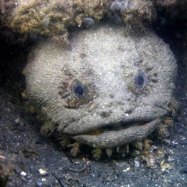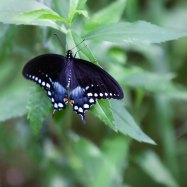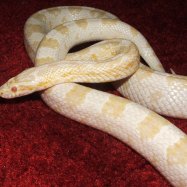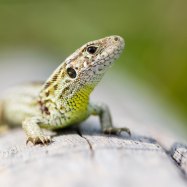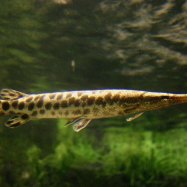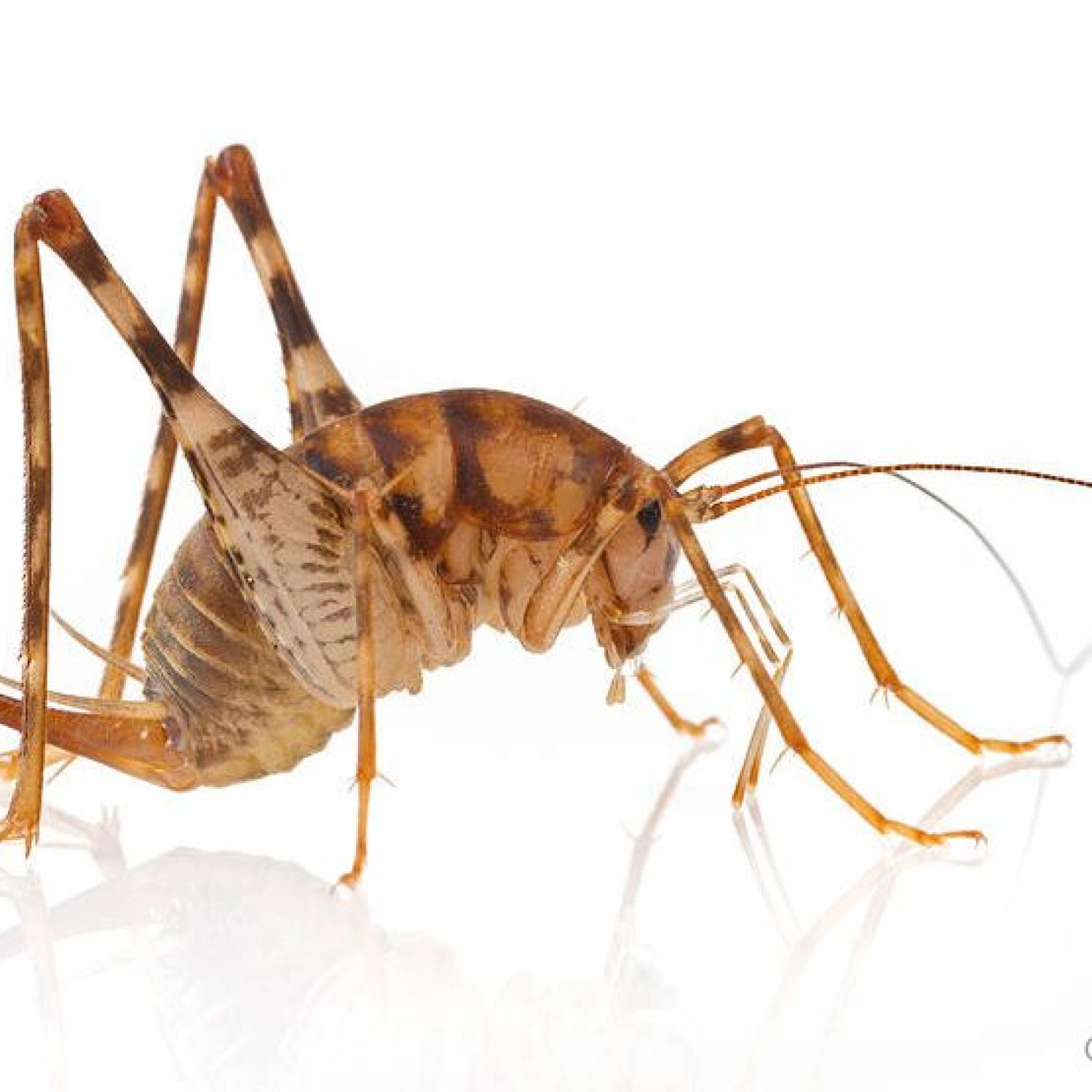
Camel Cricket
Camel crickets vary in size, but most species measure between ½ and 1 ½ inches in length.
Camel crickets, also known as cave crickets, are common insects found globally. They have a distinctive humpbacked appearance and long, powerful hind legs for jumping. Their size ranges from ½ to 1 ½ inches, making them a bit larger than other crickets. They are mostly found in dark, damp places like caves, basements, and woodpiles. Scientifically known as Rhaphidophoridae, these fascinating insects are a crucial part of the ecosystem.
Animal Details Summary:
Common Name: Camel Cricket
Kingdom: Animalia
Habitat: Camel crickets are typically found in dark, damp environments such as caves, basements, and crawl spaces. They prefer areas with high humidity and low light.
The Fascinating World of Camel Crickets: Discovering the Secrets of a Unique Insect
In the mysterious depths of caves, basements, and crawl spaces, a unique and elusive creature dwells. Its long, slender body and large jumping legs make it a remarkable and intriguing insect to encounter. This creature is known as the camel cricket, and it belongs to the scientific family Rhaphidophoridae, commonly referred to as camel crickets. These fascinating insects have captured the attention of many due to their unusual appearance and elusive nature Camel Cricket. In this article, we will delve into the world of camel crickets, exploring their habitat, feeding habits, distribution, and unique characteristics.Meet the Camel Cricket
Before we dive into the world of camel crickets, let's get to know this peculiar insect a little better. Scientifically known as Rhaphidophoridae, the name "camel cricket" comes from their humped-back appearance, similar to that of a camel. These insects belong to the kingdom Animalia, phylum Arthropoda, and class Insecta. They are part of the order Orthoptera, which includes grasshoppers, crickets, and locusts. Camel crickets are part of the family Rhaphidophoridae, which includes over 200 species.Camel crickets can be found in a variety of colors, but most species are typically brown in color. This coloration allows them to blend into their environment, making it easier for them to hide and avoid predators. Their body shape is also perfectly adapted for their preferred habitat Canvasback. With long antennae and large hind legs, camel crickets are designed for survival in dark and damp environments.
Where Can You Find Camel Crickets?
While the origins of camel crickets are unknown, they are now found worldwide, with species distributed in temperate and tropical regions. These insects are commonly found in North America, Europe, Asia, and Africa. They are primarily found in dark, damp environments such as caves, basements, and crawl spaces. Due to their preference for high humidity and low light, they are commonly found in areas with leaking pipes or damp walls.Camel crickets are also known to make their homes under rocks or logs, in leaf and debris piles, and even in the hollows of trees. In some parts of the world, they have also been found living in attics and within the walls of buildings. These versatile creatures can adapt to a variety of habitats, as long as the conditions are suitable for their survival.
Feeding Habits of Camel Crickets
Camel crickets are omnivorous insects, meaning they can feed on both plants and animals. They have a diverse diet, consuming decaying plant material, fungi, insects, and even fabric. In nature, these insects play a beneficial role as they help break down decaying matter, contributing to the natural recycling process. In homes, however, they can cause damage by feeding on fabrics and other materials.The Fascinating World of Reproduction
When it comes to reproduction, camel crickets have a unique and interesting process. Unlike many insects that lay eggs, camel crickets give birth to live young. The female camel cricket carries her eggs on her body until they are ready to hatch. The number of eggs produced can vary from one to over a hundred, depending on the species. Once the eggs have hatched, the young camel crickets are born live and resemble miniature versions of the adults.Interestingly, camel crickets also exhibit a form of parental care. The female will remain with her young, providing them with basic care and nourishment until they are ready to fend for themselves. This behavior is quite rare among insects, making camel crickets even more fascinating creatures to study.
Camel Cricket Life Span
The average lifespan of a camel cricket is one to two years. However, this can vary depending on the species and the environment in which they live. Factors like sufficient food, shelter, and protection from predators can contribute to a longer lifespan for these insects. In captivity, camel crickets have been known to live up to three years.Behavior and Adaptations of Camel Crickets
Camel crickets are nocturnal creatures, meaning they are most active at night. They spend their days resting and hiding in dark, damp places and come out to feed at night. This behavior helps them avoid predators and find their food more easily. However, when light is present, they may still be active, exhibiting their characteristic jumping behavior.Their long, slender bodies and large hind legs are also crucial adaptations for survival in their preferred habitat. The long antennae help the camel crickets navigate through dark environments, while the large hind legs aid in their jumping ability. These powerful legs can launch them great distances, allowing them to quickly escape danger.
Despite their name, camel crickets do not have the ability to spit, a myth that is often associated with them. This misconception may have stemmed from their defensive behavior when they feel threatened, during which they may regurgitate a brown liquid. However, this behavior serves to repel predators rather than spit at them.
The Fascinating World of Camel Cricket Myths
Camel crickets have been surrounded by many myths and misconceptions throughout the years. These myths have often led to fear and misunderstanding of these insects. One of the most common myths is that camel crickets, also known as cave crickets, are poisonous. This is not true, as these insects do not possess any venom or poison.Another popular myth is that camel crickets are a sign of poor hygiene. While they are often found in dark and damp environments that may indicate water or moisture problems, camel crickets are not a result of poor hygiene. They are simply attracted to these conditions for survival.
The Importance of Camel Crickets in Nature
Camel crickets may not be the most glamorous or popular insects, but they play a vital role in the ecosystem. As mentioned earlier, these insects help break down decaying matter, contributing to the natural recycling process. They are also an essential food source for other animals, including spiders and small mammals. By maintaining a balance in their environment, camel crickets play a critical role in the natural food chain.Camel Cricket Infestations and Management
While camel crickets are an important part of the ecosystem, they can become a nuisance when they invade homes and buildings in large numbers. These infestations can occur when their preferred habitats are disturbed or destroyed, forcing them to seek new shelter. In these cases, removing sources of moisture, sealing cracks and crevices, and repairing any water damage can help deter camel crickets from seeking shelter inside.If an infestation has already occurred, it is best to contact a pest control professional to safely and effectively remove the camel crickets. The use of pesticides should be avoided as they can pose health risks to both humans and pets, and they may also have negative effects on the environment.
Final Thoughts
The world of camel crickets may seem dark and mysterious, but it is full of fascinating facts and unique behavior. These elusive insects have adapted to thrive in dark and damp environments, making them excellent survivors. While they may not be the most popular insect, they play a vital role in the ecosystem, and their intriguing habits make them worthy of admiration and study. So, the next time you come across a camel cricket, take a moment to appreciate the fascinating creature before you.

Camel Cricket
Animal Details Camel Cricket - Scientific Name: Rhaphidophoridae
- Category: Animals C
- Scientific Name: Rhaphidophoridae
- Common Name: Camel Cricket
- Kingdom: Animalia
- Phylum: Arthropoda
- Class: Insecta
- Order: Orthoptera
- Family: Rhaphidophoridae
- Habitat: Camel crickets are typically found in dark, damp environments such as caves, basements, and crawl spaces. They prefer areas with high humidity and low light.
- Feeding Method: Camel crickets are omnivorous and can feed on a variety of organic matter, including decaying plant material, fungi, insects, and fabric.
- Geographical Distribution: Camel crickets are found worldwide, with species distributed in temperate and tropical regions.
- Country of Origin: Unknown
- Location: Camel crickets are commonly found in North America, Europe, Asia, and Africa.
- Animal Coloration: Camel crickets are typically brown in color, which allows them to blend into their environment.
- Body Shape: Camel crickets have long, slender bodies with long antennae. They also have large hind legs that are adapted for jumping.
- Length: Camel crickets vary in size, but most species measure between ½ and 1 ½ inches in length.
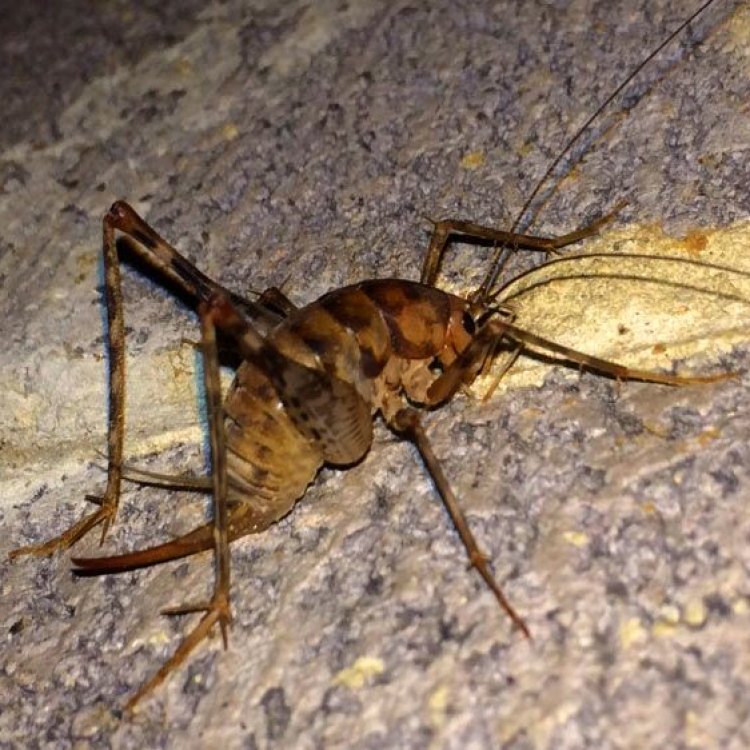
Camel Cricket
- Adult Size: Camel crickets reach their full size within a few months of hatching.
- Average Lifespan: Camel crickets have an average lifespan of 1 to 2 years.
- Reproduction: Camel crickets reproduce sexually.
- Reproductive Behavior: Male camel crickets produce a calling song to attract females. After mating, females lay eggs in moist soil or crevices.
- Sound or Call: Male camel crickets produce a characteristic chirping sound to attract mates.
- Migration Pattern: Camel crickets do not migrate.
- Social Groups: Camel crickets are typically solitary insects, but they may interact during mating.
- Behavior: Camel crickets are nocturnal and are most active at night. They are agile jumpers and can quickly escape predators.
- Threats: Camel crickets face threats from predators such as spiders, bats, and birds. They may also be negatively affected by changes in habitat due to human activities.
- Conservation Status: No specific conservation status information is available for camel cricket species.
- Impact on Ecosystem: Camel crickets play a role in the decomposition of organic matter and are food sources for other animals.
- Human Use: Camel crickets are not commonly used by humans.
- Distinctive Features: Camel crickets have a hump-like shape on their backs, giving them their common name. They also have long antennae and large hind legs for jumping.
- Interesting Facts: 1. Camel crickets are also known as cave crickets or spider crickets. 2. They are nocturnal and are attracted to light. 3. Some species of camel crickets have wings, while others are wingless. 4. Camel crickets are not harmful to humans and do not bite or sting. 5. They have poor eyesight and rely heavily on their antennae to navigate their environment.
- Predator: Camel crickets are preyed upon by a variety of animals, including spiders, bats, birds, and small mammals.
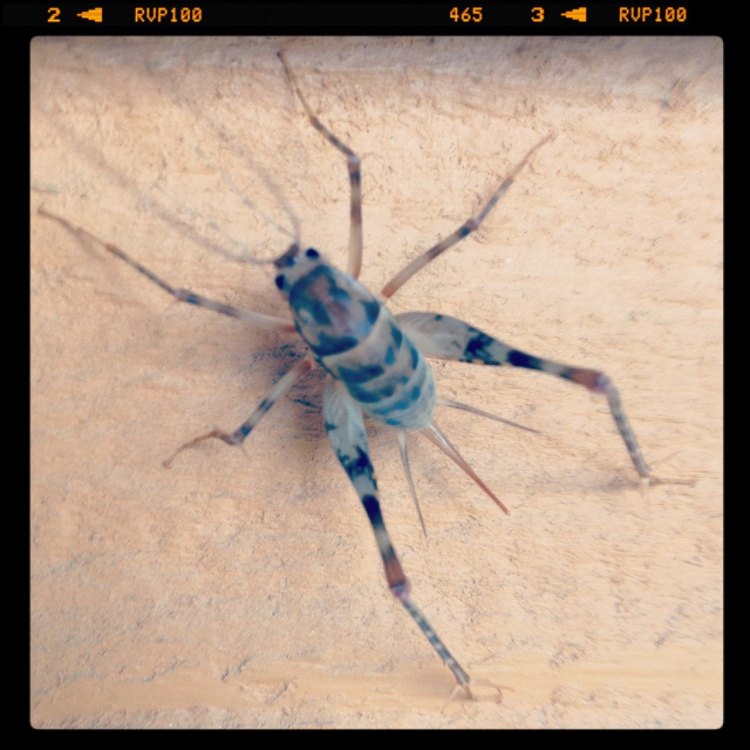
Rhaphidophoridae
The Curious World of Camel Crickets: Unveiling the Mysteries of these Hump-Backed Insects
When it comes to creepy crawlies, most people tend to think of spiders, centipedes, or cockroaches. But there is one little creature that often goes unnoticed - the camel cricket. These hump-backed insects may not be as well-known as their counterparts, but they have some unique qualities that make them worthy of our attention.From their distinctive features and behavior to their role in the ecosystem, camel crickets have a fascinating world that is waiting to be explored PeaceOfAnimals.Com. Let's dive in and discover the secrets of these nocturnal creatures.
The Basics: Size, Lifespan, and Reproduction
Camel crickets, also known as cave crickets or spider crickets, belong to the family Rhaphidophoridae. They are typically found in caves, forests, and moist areas such as basements and ditches. These insects are known for their hump-like shape on their backs, giving them their common name.As with most insects, camel crickets go through a series of molts before reaching their adult size. They can grow from a tiny egg to their full size within just a few months. On average, these insects can reach a length of up to 2 inches, making them one of the larger species of crickets.
Camel crickets have an average lifespan of 1 to 2 years, depending on their environment and available food sources. However, some species have been known to live for up to 4 years Chestnut Sided Warbler.
These insects reproduce sexually, with males and females coming together for mating. Interestingly, male camel crickets have a unique way of attracting females - they produce a calling song by rubbing their hind legs against their wings to create a chirping sound.
Once the females are successfully courted, they lay their eggs in moist soil or crevices. These eggs then hatch into nymphs, which will go through several molts before reaching adulthood.
Sounds and Social Behavior
One of the most distinct features of male camel crickets is their ability to produce a characteristic chirping sound. This sound is used to attract mates and is often loudest during the breeding season.However, these insects are not known for their social behavior. They are typically solitary, but during mating, males and females may interact with each other. Female camel crickets may also guard their eggs against potential predators.
Nocturnal and Agile Creatures
Camel crickets are nocturnal creatures, which means they are most active at night. This behavior is mainly due to their aversion to light. These insects tend to hide in dark, damp areas during the day and come out to feed and mate at night.Unlike other crickets, which use their wings to fly, camel crickets are agile jumpers. They have large hind legs that allow them to jump great distances and avoid predators. They also have poor eyesight and rely heavily on their long antennae to navigate their surroundings.
Predators and Threats
Like most insects, camel crickets are not immune to predators. They face threats from spiders, bats, birds, and small mammals. Some species of camel crickets have even been observed to mimic the sounds of venomous spiders to frighten away potential predators.These insects may also be negatively affected by changes in their habitat due to human activities. Urbanization and deforestation can disrupt their natural environment and make it difficult for them to survive.
Conservation Status and Impact on Ecosystem
Unlike endangered species like the bees or butterflies, there is no specific conservation status for camel cricket species. Since they are not widely studied or recognized, there is no data on their population or conservation efforts.However, these insects play an essential role in the ecosystem. They are known as decomposers, feeding on decaying organic matter and helping to break it down. They are also a food source for other animals, contributing to the balance and health of the ecosystem.
Human Uses and Interesting Facts
Camel crickets are not commonly used by humans, but there is one interesting use for these insects - fishing bait. Some fishermen use camels crickets as bait, mainly because they are easy to catch and do not require specialized equipment.Other interesting facts about camel crickets include:
- They are attracted to light and may often be seen around outdoor lights or in basements where there is minimal light.
- Some species of camel crickets have wings, while others are wingless.
- These insects are not harmful to humans and do not bite or sting.
- Camel crickets have poor eyesight and rely heavily on their antennae to navigate their environment.
The Fascinating World of Camel Crickets
In a world where insects can often be seen as pests, camel crickets stand out with their unique features and behavior. From their hunchbacked appearance to their ability to produce a calling song, these insects have a lot to offer.Despite their importance in the ecosystem, there is still much we don't know about camel crickets. With further research and understanding, we can uncover the mysteries of these curious creatures and gain a deeper appreciation for their role in our world.
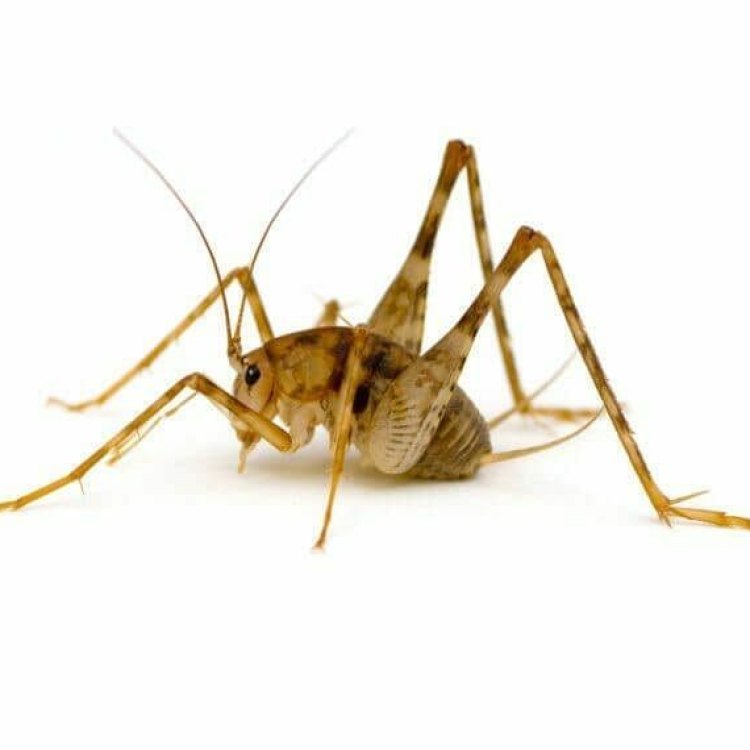
The Fascinating World of Camel Crickets: Discovering the Secrets of a Unique Insect
Disclaimer: The content provided is for informational purposes only. We cannot guarantee the accuracy of the information on this page 100%. All information provided here may change without prior notice.






